-
 Bitcoin
Bitcoin $84,993.8786
0.34% -
 Ethereum
Ethereum $1,599.9353
1.27% -
 Tether USDt
Tether USDt $0.9999
-0.01% -
 XRP
XRP $2.0813
0.78% -
 BNB
BNB $592.4105
0.82% -
 Solana
Solana $138.1937
3.17% -
 USDC
USDC $1.0000
0.00% -
 Dogecoin
Dogecoin $0.1589
2.71% -
 TRON
TRON $0.2413
-1.55% -
 Cardano
Cardano $0.6307
2.60% -
 UNUS SED LEO
UNUS SED LEO $9.3881
1.71% -
 Chainlink
Chainlink $12.8366
1.65% -
 Avalanche
Avalanche $19.2740
1.26% -
 Stellar
Stellar $0.2445
1.24% -
 Toncoin
Toncoin $2.9868
-0.07% -
 Shiba Inu
Shiba Inu $0.0...01221
3.10% -
 Hedera
Hedera $0.1669
0.87% -
 Sui
Sui $2.1351
1.39% -
 Bitcoin Cash
Bitcoin Cash $336.8750
2.70% -
 Hyperliquid
Hyperliquid $18.0804
6.57% -
 Polkadot
Polkadot $3.7246
1.15% -
 Litecoin
Litecoin $76.4144
1.52% -
 Dai
Dai $0.9999
0.00% -
 Bitget Token
Bitget Token $4.4597
2.23% -
 Ethena USDe
Ethena USDe $0.9992
0.00% -
 Pi
Pi $0.6437
5.71% -
 Monero
Monero $212.9449
-1.50% -
 Uniswap
Uniswap $5.2448
1.29% -
 Pepe
Pepe $0.0...07289
2.88% -
 OKB
OKB $50.8316
2.01%
What is the finality of the blockchain?
Finality in blockchain ensures transactions are irreversible, crucial for trust and efficiency; it varies from probabilistic in Bitcoin to absolute in Ethereum 2.0.
Apr 16, 2025 at 05:21 am

The concept of finality in the blockchain context refers to the point at which a transaction or block is considered irreversible and permanently recorded on the blockchain. Finality is crucial for ensuring the integrity and reliability of transactions, as it determines when a transaction can be trusted as complete and unalterable. Different blockchain networks approach finality in various ways, depending on their consensus mechanisms and design philosophies. In this article, we will delve into the intricacies of blockchain finality, exploring its importance, different types, and how it is achieved across various blockchain platforms.
The Importance of Finality in Blockchain
Finality is a critical component of blockchain technology because it directly impacts the security and usability of the network. When a transaction achieves finality, it means that it has been verified and accepted by the network, and it cannot be altered or reversed. This is particularly important in financial transactions, where the certainty of a transaction's completion is necessary for trust and efficiency.
Without finality, users would be hesitant to rely on blockchain networks for high-value transactions, as there would always be a risk that the transaction could be undone. Therefore, understanding and achieving finality is essential for the practical application of blockchain technology in various industries, including finance, supply chain management, and beyond.
Types of Finality in Blockchain
There are two primary types of finality in blockchain networks: probabilistic finality and absolute finality. Each type has its own set of characteristics and is used by different blockchain platforms.
Probabilistic Finality
Probabilistic finality is commonly found in blockchains that use Proof of Work (PoW) consensus mechanisms, such as Bitcoin and Ethereum (prior to its transition to Proof of Stake). In these networks, finality is achieved through the accumulation of subsequent blocks on top of the block containing the transaction in question. The more blocks that are added after the transaction block, the higher the probability that the transaction will remain unchanged.
For example, in Bitcoin, a transaction is generally considered final after six confirmations, meaning six blocks have been mined on top of the block containing the transaction. However, even after six confirmations, there is still a small chance (albeit very small) that the transaction could be reversed through a 51% attack or other malicious activities.
Absolute Finality
Absolute finality, on the other hand, guarantees that once a transaction is confirmed, it cannot be altered under any circumstances. This type of finality is often associated with blockchains that use Proof of Stake (PoS) or other consensus mechanisms designed to provide immediate and irrevocable confirmation of transactions.
For instance, in the Ethereum 2.0 network, which uses a PoS consensus mechanism, finality is achieved through a process called "justification and finalization." Once a block is finalized, it is considered immutable, and the transactions within it are permanently recorded on the blockchain.
How Finality is Achieved in Different Blockchains
The way finality is achieved can vary significantly between different blockchain networks. Here, we will explore how some of the most prominent blockchains approach finality.
Bitcoin
In Bitcoin, finality is achieved through the accumulation of subsequent blocks. As mentioned earlier, a transaction is typically considered final after six confirmations. This means that six blocks have been mined and added to the blockchain after the block containing the transaction. The probability of a transaction being reversed decreases exponentially with each additional confirmation.
- Step 1: A transaction is broadcast to the Bitcoin network.
- Step 2: Miners include the transaction in a block and solve the cryptographic puzzle to mine the block.
- Step 3: The block is added to the blockchain, and the transaction receives its first confirmation.
- Step 4: Additional blocks are mined and added to the blockchain, increasing the number of confirmations for the transaction.
- Step 5: After six confirmations, the transaction is generally considered final.
Ethereum (Pre-Ethereum 2.0)
Before the transition to Ethereum 2.0, Ethereum used a PoW consensus mechanism similar to Bitcoin. Therefore, finality in Ethereum was also probabilistic. A transaction was typically considered final after 12 confirmations, although this could vary depending on the specific use case and the level of security required.
- Step 1: A transaction is sent to the Ethereum network.
- Step 2: Miners include the transaction in a block and mine the block.
- Step 3: The block is added to the Ethereum blockchain, and the transaction receives its first confirmation.
- Step 4: Subsequent blocks are mined, increasing the number of confirmations for the transaction.
- Step 5: After 12 confirmations, the transaction is generally considered final.
Ethereum 2.0
With the transition to Ethereum 2.0, the network now uses a PoS consensus mechanism, which provides absolute finality. Finality in Ethereum 2.0 is achieved through a process called "justification and finalization."
- Step 1: Validators are selected to propose and attest to blocks.
- Step 2: A block is proposed and added to the blockchain.
- Step 3: The block goes through a justification process, where validators vote on its validity.
- Step 4: If a supermajority of validators agree, the block is considered justified.
- Step 5: After two epochs (approximately 6.4 minutes each), the justified block is finalized, meaning it is permanently recorded on the blockchain and cannot be altered.
Other Blockchain Networks
Different blockchain networks may have unique approaches to achieving finality. For example, Algorand uses a Pure Proof of Stake (PPoS) consensus mechanism, which provides immediate finality for transactions. Once a transaction is confirmed, it is considered final and cannot be reversed.
- Step 1: A transaction is submitted to the Algorand network.
- Step 2: A subset of validators is randomly selected to participate in the consensus process.
- Step 3: The selected validators vote on the transaction's validity.
- Step 4: If the transaction receives a sufficient number of votes, it is immediately considered final and added to the blockchain.
Challenges and Considerations in Achieving Finality
While finality is a crucial aspect of blockchain technology, achieving it can present several challenges. One of the primary challenges is balancing the speed of transaction confirmation with the security and immutability of the blockchain. Faster finality can lead to increased transaction throughput and better user experience, but it may also increase the risk of malicious activities, such as double-spending attacks.
Another consideration is the trade-off between decentralization and finality. Some consensus mechanisms that provide absolute finality, such as PoS, may require a certain level of centralization to achieve quick and reliable finality. This can be at odds with the decentralized ethos of many blockchain networks.
Finality and its Impact on Blockchain Applications
The level of finality provided by a blockchain network can significantly impact its suitability for various applications. For example, in the financial sector, where high-value transactions are common, absolute finality is often preferred to ensure the security and reliability of transactions. On the other hand, in applications where speed is more critical than absolute security, such as microtransactions or gaming, probabilistic finality may be sufficient.
Understanding the finality characteristics of a blockchain network is essential for developers and users when choosing the appropriate platform for their specific use case. By carefully considering the trade-offs between speed, security, and decentralization, stakeholders can make informed decisions that align with their needs and objectives.
Frequently Asked Questions
Q1: Can finality be achieved without a consensus mechanism?
A1: No, finality in blockchain networks is directly tied to the consensus mechanism used by the network. Consensus mechanisms are responsible for validating and confirming transactions, which is essential for achieving finality. Without a consensus mechanism, there would be no way to ensure that transactions are verified and permanently recorded on the blockchain.
Q2: How does finality affect the scalability of a blockchain network?
A2: Finality can impact the scalability of a blockchain network in several ways. Networks with faster finality can process transactions more quickly, potentially increasing throughput and scalability. However, achieving faster finality may require more centralized consensus mechanisms, which can compromise the network's decentralization and security. Balancing finality with scalability is a key consideration for blockchain developers.
Q3: Are there any blockchain networks that offer both probabilistic and absolute finality?
A3: Some blockchain networks, such as Polkadot, offer a hybrid approach to finality. Polkadot uses a consensus mechanism called GRANDPA (GHOST-based Recursive Ancestor Deriving Prefix Agreement) to achieve absolute finality for blocks, while also allowing for probabilistic finality for transactions within those blocks. This hybrid approach aims to provide the benefits of both types of finality, offering a high level of security and reliability.
Q4: How can users verify the finality of a transaction on a blockchain network?
A4: Users can verify the finality of a transaction by checking the number of confirmations it has received on the blockchain. For networks with probabilistic finality, such as Bitcoin, users can use blockchain explorers to see how many blocks have been mined since the transaction was included in a block. For networks with absolute finality, such as Ethereum 2.0, users can check if the block containing the transaction has been finalized through the network's consensus process.
Disclaimer:info@kdj.com
The information provided is not trading advice. kdj.com does not assume any responsibility for any investments made based on the information provided in this article. Cryptocurrencies are highly volatile and it is highly recommended that you invest with caution after thorough research!
If you believe that the content used on this website infringes your copyright, please contact us immediately (info@kdj.com) and we will delete it promptly.
- Codename:Pepe dips 30% from March highs, sparking investor interest in Codename:Pepe's AI-powered alternative.
- 2025-04-19 14:20:14
- Despite Its Elevated Position as the World's Premier Meme Coin, Dogecoin (DOGE) Has Been Struggling
- 2025-04-19 14:20:13
- Market Update: Crypto Market Remains Steady at $2.79 Trillion with Minimal 0.14% Growth
- 2025-04-19 14:15:13
- Can Mantra (OM) Bounce Back? How High Can the Price Go After 90% Crash?
- 2025-04-19 14:15:13
- President Donald Trump Said at a 2024 Campaign Event That He Wanted All Remaining Bitcoin
- 2025-04-19 14:10:13
- Qubetics ($TICS): The New Frontier in Blockchain Interoperability
- 2025-04-19 14:10:13
Related knowledge
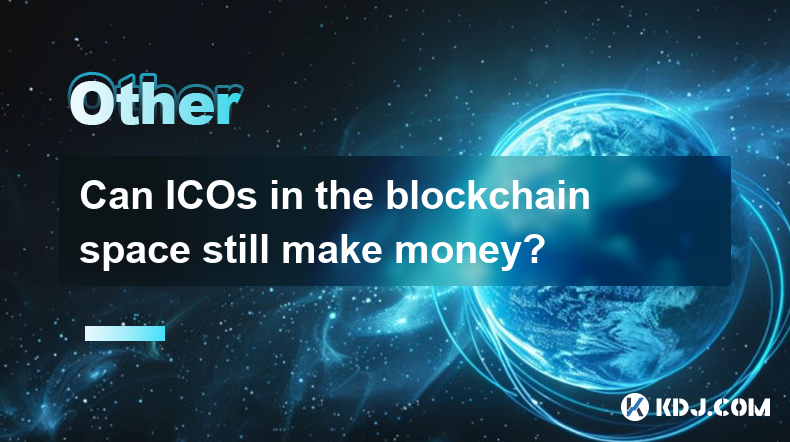
Can ICOs in the blockchain space still make money?
Apr 17,2025 at 08:29pm
The landscape of Initial Coin Offerings (ICOs) in the blockchain space has evolved significantly since their peak in 2017 and 2018. Despite the increased regulatory scrutiny and the rise of alternative fundraising methods like Security Token Offerings (STOs) and Initial Exchange Offerings (IEOs), ICOs can still be a viable way to raise funds and generat...

Can the application of blockchain in supply chain finance bring benefits?
Apr 15,2025 at 04:00pm
Can the application of blockchain in supply chain finance bring benefits? The integration of blockchain technology into supply chain finance has garnered significant attention in the cryptocurrency and financial sectors. This article explores how blockchain can potentially revolutionize supply chain finance, detailing its benefits and providing a compre...
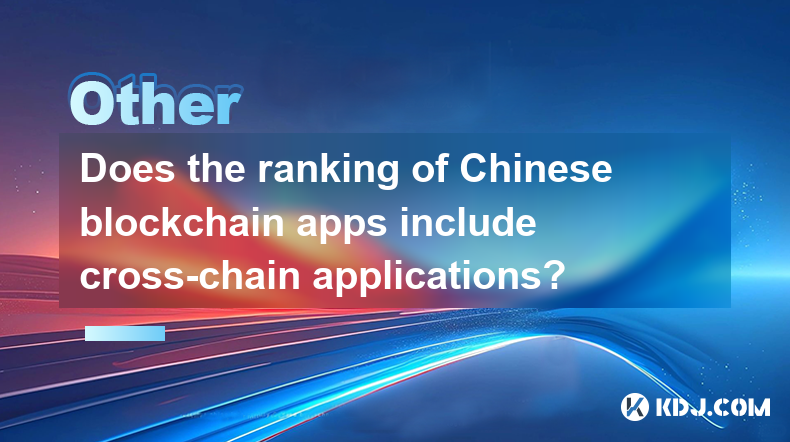
Does the ranking of Chinese blockchain apps include cross-chain applications?
Apr 14,2025 at 04:00pm
The ranking of Chinese blockchain apps is a comprehensive evaluation that takes into account various aspects such as user base, transaction volume, and technological innovation. A pertinent question arises regarding whether these rankings include cross-chain applications. Cross-chain applications, which allow different blockchain networks to interact an...
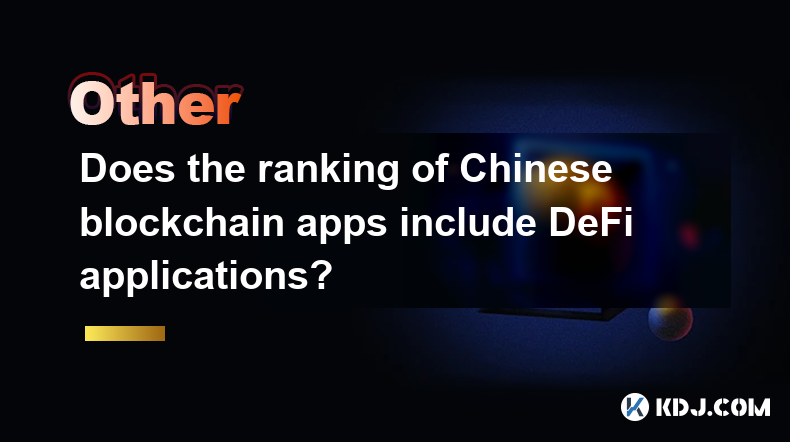
Does the ranking of Chinese blockchain apps include DeFi applications?
Apr 15,2025 at 06:57am
The ranking of Chinese blockchain apps is a comprehensive list that showcases the most popular and influential applications within the cryptocurrency ecosystem. One question that often arises is whether these rankings include DeFi applications. To answer this, we need to delve into the specifics of how these rankings are compiled and what types of appli...
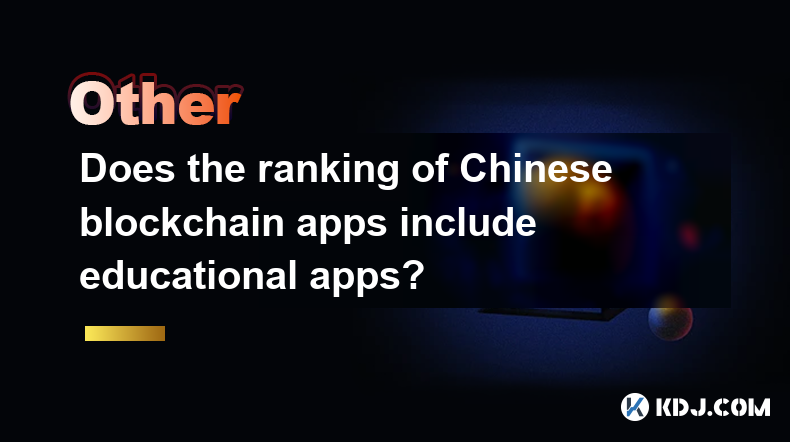
Does the ranking of Chinese blockchain apps include educational apps?
Apr 16,2025 at 03:35am
The ranking of Chinese blockchain apps often includes a variety of categories, from finance and gaming to social networking and beyond. One question that frequently arises is whether these rankings include educational apps. To address this, we need to delve into the specifics of how blockchain apps are categorized and ranked in China, and whether educat...
Does the ranking of Chinese blockchain apps include enterprise-level applications?
Apr 15,2025 at 06:42am
The ranking of Chinese blockchain apps often includes a variety of applications, ranging from consumer-focused to enterprise-level solutions. Understanding the scope and criteria for these rankings is essential to determine if enterprise-level applications are included. This article delves into the specifics of how Chinese blockchain app rankings are co...

Can ICOs in the blockchain space still make money?
Apr 17,2025 at 08:29pm
The landscape of Initial Coin Offerings (ICOs) in the blockchain space has evolved significantly since their peak in 2017 and 2018. Despite the increased regulatory scrutiny and the rise of alternative fundraising methods like Security Token Offerings (STOs) and Initial Exchange Offerings (IEOs), ICOs can still be a viable way to raise funds and generat...

Can the application of blockchain in supply chain finance bring benefits?
Apr 15,2025 at 04:00pm
Can the application of blockchain in supply chain finance bring benefits? The integration of blockchain technology into supply chain finance has garnered significant attention in the cryptocurrency and financial sectors. This article explores how blockchain can potentially revolutionize supply chain finance, detailing its benefits and providing a compre...

Does the ranking of Chinese blockchain apps include cross-chain applications?
Apr 14,2025 at 04:00pm
The ranking of Chinese blockchain apps is a comprehensive evaluation that takes into account various aspects such as user base, transaction volume, and technological innovation. A pertinent question arises regarding whether these rankings include cross-chain applications. Cross-chain applications, which allow different blockchain networks to interact an...

Does the ranking of Chinese blockchain apps include DeFi applications?
Apr 15,2025 at 06:57am
The ranking of Chinese blockchain apps is a comprehensive list that showcases the most popular and influential applications within the cryptocurrency ecosystem. One question that often arises is whether these rankings include DeFi applications. To answer this, we need to delve into the specifics of how these rankings are compiled and what types of appli...

Does the ranking of Chinese blockchain apps include educational apps?
Apr 16,2025 at 03:35am
The ranking of Chinese blockchain apps often includes a variety of categories, from finance and gaming to social networking and beyond. One question that frequently arises is whether these rankings include educational apps. To address this, we need to delve into the specifics of how blockchain apps are categorized and ranked in China, and whether educat...

Does the ranking of Chinese blockchain apps include enterprise-level applications?
Apr 15,2025 at 06:42am
The ranking of Chinese blockchain apps often includes a variety of applications, ranging from consumer-focused to enterprise-level solutions. Understanding the scope and criteria for these rankings is essential to determine if enterprise-level applications are included. This article delves into the specifics of how Chinese blockchain app rankings are co...
See all articles
























































































